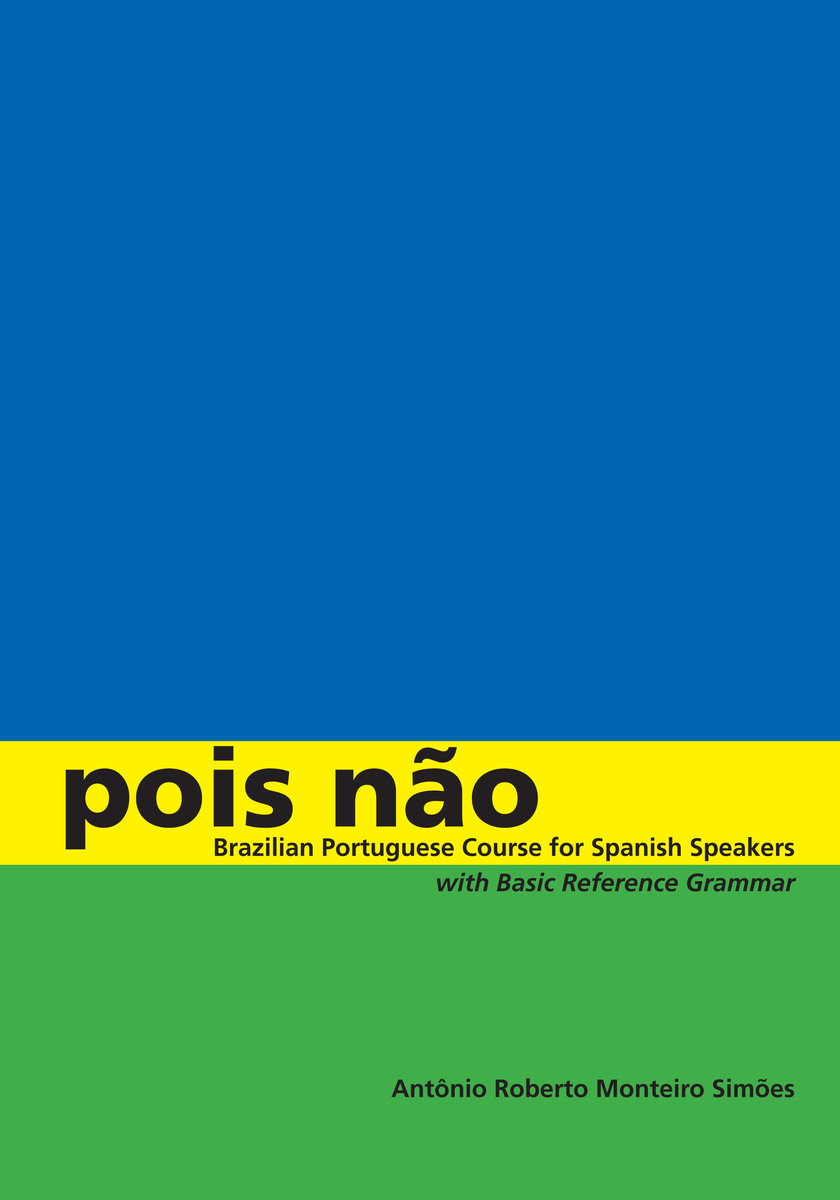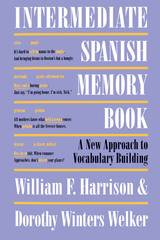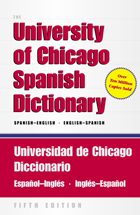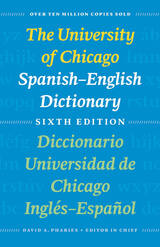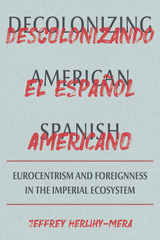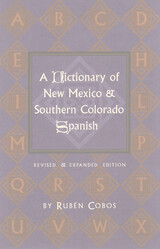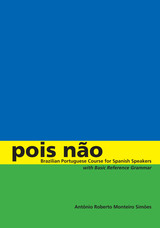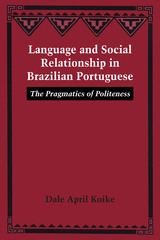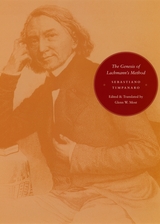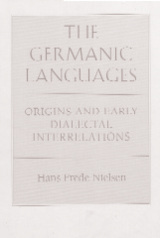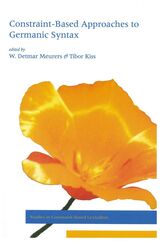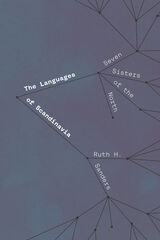Paper: 978-0-292-71781-7 | eISBN: 978-0-292-77778-1
Library of Congress Classification PC5067.3.S56 2008
Dewey Decimal Classification 469.2461
Spanish speakers can learn Brazilian Portuguese much more rapidly than any other language, and thousands of students have used Antônio Simões's text/workbook Com licença: Brazilian Portuguese for Spanish Speakers to make the transition between the two languages. Recognizing the need for a text that incorporates current cultural references and the latest language pedagogy, Simões now offers Pois não: Brazilian Portuguese Course for Spanish Speakers, with Basic Reference Grammar.
Pois não contrasts Portuguese and Spanish, which accomplishes two main goals. It teaches the equivalent of one year of college Portuguese in one semester, three times a week, to Spanish speakers who also have a solid understanding of English. Additionally, the book serves as a basic reference guide to Brazilian Portuguese for the same audience.
Pois não can be used by students in the classroom or by independent learners. Users of the book may focus on the drills alone, concentrate on both the explanations and drills, or use the book as a reference for consultation only. Answers to all of the exercises are included in the book. Audio and video recordings by native Brazilian speakers of dialogues that appear in the book can be downloaded at https://utexas.box.com/v/PoisNaoAudio.
Antônio Roberto Monteiro Simões is Professor of Spanish and Portuguese Linguistics at the University of Kansas. A native of Brazil, he has taught both Spanish and Portuguese for many years. His main interest is in Romance phonetics and phonology of discourse, as well as in testing and teaching materials. Simões has authored books and articles and organized and participated in international language conferences.
Contents Introduction 19 0.1 Brazilian Portuguese and Spanish 20 0.1.1 False Cognates: Eu N¿o Falo Portugu¿s, by Daniel Samper Pizano 20 0.1.2 False Cognates: Word List 23 0.1.3 Common Mistakes 26 0.1.4 Mopho-Syntactic Differences: Preliminary Remarks 27 0.2 The Sound Systems of Spanish and Brazilian Portuguese 29 0.2.1 Some Consonant Features: b, d, g; "S" in Syllable Final Position 30 0.2.2 The Oral Vowels: Spanish and Brazilian Portuguese 32 0.2.3 The Nasal Vowels: Brazilian Portuguese 33 0.3 The Consonants: Spanish and Brazilian Portuguese 34 0.3.1 Summary of Sounds of Brazilian Portuguese that Are Not Part of the Inventory of Spanish Sounds 36 0.3.1.2 Comparison of Spanish ll and ¿ with Portuguese lh and nh 37 0.4 Names of the Alphabet Letters; Phonetic Symbols 38 0.5 Diacritics, Hyphen and Other Symbols 40 0.5 The Portuguese Writing System 43 The Alphabet 43 0.7 Accentuation 43 0.8 Warming Up: Getting Ready to Use the Language 46 0.8.1 Useful Expressions for Classroom Activities 46 0.8.2 Colloquial Greetings (Sauda¿¿es) 47 0.8.3 Leave-Takings (Despedidas) 47 0.8.4 Introductions (Apresenta¿¿es), Reactions (Rea¿¿es) 47 0.8.5 General Expressions 48 0.9 Short Dialogues Using the Preceding Expressions 48 0.10 Translation 50 0.11 Dictation 50 0.12 Brazilian Popular Music (M¿sica Popular Brasileira - MPB) 51 Unit 1. Primeiros Contatos 53 1. NA UNIVERSIDADE 54 1.1 Dialogue: O Primeiro Dia na Universidade 54 1.2 Indicative Mode, Present Tense 56 1.2.1 Regular Verb Forms 57 1.2.2 Present Tense 57 1.3 Pronunciation: /e/, /_/; /o/, /¿/; /i/, /¿/; "ti, te, di, de" 61 1.3.1 Nine Simplified Rules of Pronunciaton 61 1.3.2 Lip Configurations of the Seven Oral Vowels of Brazilian Portuguese 64 1.3.3 The Vowels /e/ and /_/, /o/ and /¿/ 64 1.3.3.1 Auditory Identification 65 1.3.3.2 VISUAL Identification of Brazilian Portuguese Sounds 67 1.3.3.3 Comprehension and Production 68 Trava-l¿ngua - O Malandro 68 1.3.4 The Vowels /i/ and /¿/ 70 1.3.4.1 VISUAL Identification of the Vowels /i/ and /¿/ 72 1.3.5 Pronunciation of [_i] and [düi] 72 1.4 Spanish and Portuguese Diphthongs 74 1.4.1 Spanish Stem-Changing Verbs and Their Portuguese Counterparts 74 1.4.2 Spanish Stem-Changing Nouns and Their Portuguese Counterparts 75 1.4.3 Spanish Gustar and Portuguese Gostar de 77 1.5 Primeiros Contatos 77 1.5.1 Greetings and Leave-Takings 78 1.5.2 Forms of Address 78 1.6 The Negative 82 1.7 Articles 84 1.7.1 Definite Articles 84 1.7.2 Indefinite Articles 84 1.8 Noun Gender and Plurals 85 1.8.1 Gender 85 1.8.2 Plurals 87 1.9 Dictation 89 1.10 Translation 89 1.11 Divers¿es, Bate-Bola e Pipoca Quentinha 90 1.11.1 Spelling, Accentuation, Plurals 90 1.12 Song: "O Estrangeiro" (1989) by Caetano Veloso 91 1.13 Carrying On - Drills on Communicative Competence 94 1.13.1 Situations to Use and Create With the Language 95 Nicknames (Port. apelidos, Span. apodos) 95 Semantic Fields 96 1.14 Active Vocabulary 99 Unit 2. Vamos Sair um Pouco 105 2. PONTOS DE ENCONTRO: RESTAURANTES, BARZINHOS E BOTECOS 106 2.1 Dialogue: No Restaurante 106 2.2 Irregular Verbs 109 2.2.1 Present Tense, Indicative Mode 109 2.2.2 A Comparison of Ser, Estar and Ficar 110 2.2.3 Ser, Estar and Ficar: More 112 2.2.4. Agreement with Ser 114 2.2.4 Estar: Present Progressive, Indicative Mode 118 2.3 Pronunciation: /a/ and /¿/ 119 2.3.1 Pronunciation Review: /e/ and /_/, /o/ and /¿/ 119 2.3.2 Pronunciation: /a/ and /¿/, /s/ and /z/ 120 2.3.3 Pronunciation: /s/ and /z/ 121 2.3.2.1 VISUAL Identification of Brazilian Portuguese Sounds 122 2.3.3.2 Sounds /e/ and /_/, /o/ and /¿/, /z/ and /¿/ 122 2.4 Combination of em, de, a, por, and Articles 124 2.4.1 Obligatory Combinations (Definite Articles) 124 2.4.2 Optional Combinations (Indefinite Articles) 124 2.5 More Verbs 126 2.5.1 Present Tense, Indicative Mode: Ir, Ir + Infinitive 126 2.5.2 Present Tense, Indicative Mode: P¿r, Querer, Ter, Vir 127 2.6 Diminutives and Augmentatives 129 2.6.1 Diminutives 129 2.6.2 Augmentatives 131 2.7 Interrogative and Exclamatory Words: Word Order 131 2.7.1 Interrogatives 132 2.7.2 Exclamatory Words 132 2.7.3 Word Order 132 2.8 Comparatives and Superlatives 134 2.8.1 Comparatives 134 2.8.2 Superlatives 135 2.8.3 Comparatives and Superlatives of bom (Span. bueno), mau (Span. malo), grande (Span. grande) and pequeno (Span. peque¿o) 136 2.9 Cardinal Numbers: 0-29 138 2.8.1 Related Words 139 2.9 Constructions with Estar com and Ficar com 140 2.9.1 Common Combinations with Estar com and Ficar com 140 2.10 Dictation 142 2.11 Translation 142 2.12 Divers¿es, Bate-Bola e Pipoca Quentinha 143 2.13 Song: "Soy Loco por Ti, Am¿rica" (1967) by Gilberto Gil and Jos¿ Carlos Capinam 145 2.14 Carrying On - Drills on Communicative Competence 147 2.15 Active Vocabulary 153 Unit 3. Entre Familiares e Amigos 161 3. REUNINDO-SE COM A FAMêLIA 162 3.1 Dialogue: Dando um Telefonema 162 3.2 Present Tense, Indicative Mode 165 3.2.1 Dar, Dizer, Fazer, Medir, Ouvir, Pedir, Poder, Trazer, Saber 165 3.2.2 Verbs Ending in -cer 167 3.3 Pronunciation: /u/, /¿/; /_/, /_/; -m Endings 168 3.3.1 /u/ and /¿/ 168 3.3.2 /_/ and /_/ 168 3.3.3 -m Ending 170 3.3.4 Auditory Training and Production 170 Poema das Sete Faces, (1930) by Carlos Drummond de Andrade 171 "Uns" (1983), by Caetano Veloso 172 Na ch¿cara do Chico Bolacha, (1964) by Cec¿lia Meireles 172 3.4 Possessive Adjectives and Pronouns 174 3.4.1 Adjectives 175 3.4.2 Pronouns 176 3.5 Interrogative Words (continued) 178 3.5.1 Combined Forms 178 3.5.2 Por que, Porque, Por qu¿, and Porqu¿ 178 3.6 Cardinal Numbers: 30-99 179 3.7 Spelling: The letters g/gu, g/j, c/¿, c/qu 182 3.7.1 Spelling Changes: Portuguese g, gu and j _ [g] and [_] 182 3.7.2 Spelling Changes: Portuguese c/¿, qu/c _ [s] and [k] 183 3.8 Dictation 184 3.9 Translation 185 3.10 Divers¿es, Bate-Bola e Pipoca Quentinha 186 3.11 Song: "Pedro Pedreiro," (1965) by Chico Buarque 189 3.12 Carrying On - Drills on Communicative Competence 191 3.13 Active Vocabulary 196 Unit 4. Fantasias, Sonhos e Realidades 199 4. NO MUNDO DA IMAGINA¿ÌO 200 4.1 Reading: O Menino Maluquinho, de Ziraldo (Alves Pinto) 200 4.2 Indicative Mode, Past and Present 202 4.2.1 Past: Preterite of Regular Verbs 203 4.2.2 Past: Imperfect of Regular Verbs 204 4.2.3 Past: Preterite and Imperfect: Ser, Ir, Estar, Poder, Ter 205 4.3 Pronunciation: /e/ and /_ /; /l/, /r/ and /R/ 208 4.3.1 /e/ and /_ / 208 4.3.2 /l/, /r/ and /R/ 209 4.3.3 Auditory Identification 211 4.3.4 Lip and Facial Gestures 212 Preg¿o do Vendedor de Lima and A Lua ¿ do Raul, (1964) by Cec¿lia Meireles 213 4.4 Expressions of Time 215 4.4.1 Telling Time 215 4.4.2 Days of the Week, Months, Special Vocabulary 217 4.4.3 Fazer and Haver 219 4.4.4 Weather and Time with Ser, Estar, Fazer, and Haver 220 4.5 Demonstratives: Adjectives and Pronouns 222 Ou Isto ou Aquilo, (1964) by Cec¿lia Meireles 222 4.5.1 Combinations with Em and De 224 4.5.2 Combinations with A 224 4.6 Prepositional Pronouns and Combinations 224 4.6.1 Pronouns as Objects of Prepositions 224 4.7 Cardinal Numbers: 100 - 1,000,000 225 4.8 Spelling: Letters a, e, ¿, i, o, ¿, u; p, b, t, d, f, v 228 4.9 Dictation 229 4.10 Translation 230 4.12 Divers¿es, Bate-Bola e Pipoca Quentinha 231 4.12.1 Subjunctive Sem Estresse 232 4.13 Song: "A Banda," (1966) Chico Buarque 233 4.14 Carrying On-Drills on Communicative Competence 236 4.15 Active Vocabulary: Measurements, Numbers, Interrogatives, Expressions of Time, General 239 Unit 5. Gestos Ling¿¿sticos e Culturais 243 5. A CULTURA DOS GESTOS LING¿êSTICOS 244 5.1 Reading: A Capoeira e o Berimbau 244 5.2 Indicative Mode, Past and Present 248 5.2.1 Past: Preterite 248 5.2.2 Past: Imperfect: P¿r, Vir, Haver 250 5.2.3 Present Tense, Mode Indicative of Servir, Repetir, Dormir, Tossir and Seguir 251 5.3 Pronunciation: Schwa, Lengthening and Diphthong 252 5.3.1 Vowel Reduction (schwa) and Lengthening (diphthongization) 253 5.3.2 Brazilian Portuguese Diphthongs and Their Spanish and English Equivalents 254 5.3.3 Auditory Identification 254 5.3.4 Pronunciation: Linking Cases 257 5.4 Special Vocabulary 259 5.4.1 Human Body 259 5.4.2 Expressions Referring to Body Parts 260 5.5 Direct and Indirect Object Pronouns: Usage and Placement 263 5.5.1 Placement and Usage of Pronouns: A Quick Reference Guide 263 5.5.2 Usage of Unstressed Pronouns: Detailed Presentation 265 5.5.3 Attachment of Unstressed Pronouns: Detailed Presentation 267 5.5.3.1 Finding the Direct and Indirect Pronouns 267 5.5.3.2 The Written (Careful) and Spoken (Informal) Languages 268 5.6 Ordinal Numbers: 1-1,000 275 5.7 Spelling: Nasalization with m, n, nh and 277 5.8 Dictation 278 5.9 Translation 279 5.10 Writing Drills: Letters and Messages 279 5.11 Divers¿es, Bate-Bola e Pipoca Quentinha 282 5.11.1 Subjunctive Sem Estresse 284 5.12 Song: "Meu Caro Amigo" (1976) by Chico Buarque and Francis Hime 285 5.13 Carrying On-Drills on Communicative Competence 287 5.14 Active Vocabulary 289 Unit 6. Cr¿nicas Brasileiras 293 6. UMA OLHADA RçPIDA NOS POVOS QUE FORMARAM O BRASIL 294 6.1 Reading: O Turco, by Fernando Sabino 295 6.2 Indicative Mode, Past Tense 297 6.2.1 Simple Past Perfect 297 6.2.2 Compounds: Present and Past Perfect 298 6.2.2.1 Past Participle Forms 299 6.2.3 Present Perfect - Exerc¿cios de fixa¿¿o 299 6.2.4 Past Perfect 303 6.3 Pronunciation Review: Open Vowels, Stops /b, d, g/ 304 6.3.1 More Review of Open and Closed Vowels 304 6.3.2 Stops /b, d, g/ 305 6.3.3 Transcription 306 6.4 Special Words 307 6.4.1 Mesmo in Emphatic Constructions 307 6.4.2 Ser Intrusivo 308 6.4.3 At¿ 309 6.4.4 Mas, Mais, M¿s 310 6.5 Spelling: The letter x 310 6.6. Os "Turcos" e Outros Povos do Brasil 312 6.6 Dictation 314 6.7 Translation 315 6.8 Writing Drills 315 6.9 Divers¿es, Bate-Bola e Pipoca Quentinha 316 6.9.1 Placement of Object Pronouns 317 6.9.2 Subjunctive Sem Estresse 318 6.10 Songs: "No Dia em Que Eu Vim-me Embora" and "Sampa" both by Caetano Veloso 319 6.11 Carrying On-Drills on Communicative Competence 320 6.12 Active Vocabulary 321 Unit 7. As Viagens 323 7. A GEOGRAFIA DO BRASIL 324 7.1 Reading: F¿rias de Natal e Ano Novo 324 7.2 Indicative Mode, Future and Present 326 7.2.1 Simple Future 326 7.2.2 "Future of the Preterite" (Conditional) 328 7.2.3 Simple Present: Verbs Ending in -ear, -iar, -uir 330 7.2.4 Simple Present: Perder, Valer, Caber, Seguir 331 7.3 Pronunciation 332 7.3.1 /v/ and /b/ 332 O Viol¿o e o Vil¿o, (1964) by Cec¿lia Meireles 333 7.3.2 Stress Differences 333 7.4 Feira/F¿rias/Feriado 335 7.5 Mapa e Regi¿es do Brasil 335 7.5.1 Use of Articles before Countries, States, and Cities 335 7.5.1 Symbols of Brazil: The Ip¿ Amarelo and Sabi¿ 336 7.6 Expressions Using Embora and Saudade 338 7.7 The Personal Infinitive 339 7.8 Spelling: s, ss, ¿, z; -isar or -izar? 341 7.9 Dictation 342 7.10 Translation 342 7.11 Writing Drill: Composition 343 7.12 Divers¿es, Bate-Bola e Pipoca Quentinha 344 7.12.1 Subjunctive Sem Estresse 346 7.13 Song: "San Vicente," (1972) by Milton Nascimento and Fernando Brandt 347 7.14 Carrying On-Drills on Communicative Competence 348 7.15 Active Vocabulary 351 Unit 8. Cuidando dos Filhos, da Vida e da Cozinha 355 8. DIçLOGO: CUIDANDO DOS FILHOS 356 8.1 Reading: Hora de Dormir 356 8.2 Indicative Mode, Reflexive Verbs, Impersonal Se and Passive Voice; Estar with Past Participle 359 8.2.1 Reflexive Verbs 359 8.2.2 Uses of Impersonal Se 367 8.2.3 Uses of (a) Gente 369 8.2.4 Passive Voice, Past Participle 370 8.2.5 Estar with Past Participle 374 8.3 Pronunciation Review 375 8.3.1 /e/ and /_/; /o/ and /¿/ 375 8.4 Negations: N¿o, Nunca, Nenhum, Nenhuma, Ningu¿m, Nada, Nem; Absolutamente, Em Absoluto 377 8.4.1 Adverbs: N¿o, Nunca 377 8.4.2 Adjectives: Nenhum, Nenhuma 378 8.4.3 Pronouns: Ningu¿m, Nada, Nenhum, Nenhuma 378 8.4.4 Nem 378 8.4.5 Absolutamente, Em Absoluto 379 8.5 Todo(s), Toda(s), Tudo; Todo (o) Dia 379 8.6 Reading - Cuidando da Vida: "Ol¿, Ol¿," (1965) by Chico Buarque 380 8.7 Imperative Mode, All Verbs 382 8.7.1 Irregular Forms: Imperative 383 8.8 Reading - Carpe diem (Cuidando da Vida e da Cozinha): "Feijoada Completa," (1977) by Chico Buarque 384 8.8.1 Vocabulary for Food: Portuguese-Spanish-English 386 8.9 Writing Drill: Going from Verse into Prose; Writing Verses. 388 8.10 Dictation 389 8.11 Translation 389 8.12 Divers¿es, Bate-Bola e Pipoca Quentinha 391 8.12.1 Subjunctive Sem Estresse 392 8.13 Songs: "O Meu Guri" (1981) by Chico Buarque and Francis Hime 394 8.14 Carrying On-Drills on Communicative Competence 396 8.15 Active Vocabulary 397 Unit 9. Cultura e Divers¿es Populares 402 9. FUTEBOL, CARNAVAL E FOLCLORE: DIVERS'ES POPULARES 403 9.1 Reading: As Grandes Festas do Povo 403 "Atr¿s do Trio El¿trico," (1969) by Caetano Veloso 404 9.2 Subjunctive: General Remarks 406 9.2.1 Subjunctive Mode, Present 408 9.3 Infinitive and Personal Infinitive Instead of Subjunctive or Indicative 412 9.3.1 Infinitive Instead of the Present Subjunctive or Indicative 412 9.3.2 Infinitives in Spanish and Portuguese Compared 415 9.4 Comparisons: Adjectives and Adverbs 416 9.5 Reading: Matem¿tica, by Lu¿s F. Ver¿ssimo 417 9.6 Subjunctive Mode, Past or Imperfect and Future 420 9.6.1 Past Tense of the Subjunctive 420 9.6.2 Subjunctive vs Indicative in If-Clauses 422 9.6.3 Future Subjunctive 423 9.6.4 Adverbial Conjunctions - Indicative or Subjunctive: A Summary 426 Adverbial Conjunctions followed by the Subjunctive or Indicative 427 9.6.5 Future Subjunctive: Portuguese and Spanish Compared 428 9.7 Divers¿es, Bate-Bola e Pipoca Quentinha 428 9.8 Carrying On-Drills on Communicative Competence 430 Linking Words, Connectors - Cohesion 430 Cantigas de Roda 432 9.9 Active Vocabulary 433 Appendixes 436 Appendix-1 - Phonetic Symbols 437 Vowels in Brazilian Portuguese 438 Diphthongs in Brazilian Portuguese 439 Appendix-2 - The Alphabet 441 Consonant Clusters 442 Appendix-3 - Orthography 443 Lexical Notation: Portuguese Diacritics, Hyphen and Other Symbols 443 Accentuation in Brazilian Portuguese - portugu¿s-padr¿o 444 Rules of Accentuation Based on Native Speaker's Intuition 446 Divergences Between Portugal and Brazil Due to Different Pronunciation of Open and Closed Vowels 448 Syllabification 448 Reading Aloud According to the Written Language: Placement of Stress in Spoken Language 449 Appendix-4 - Por and Para 451 Appendix-5 - Articles, Their Combinations and Contractions with Prepositions 452 Appendix-6 - Gender and Number 454 Appendix-7 - Cardinal and Ordinal Numbers; Related Expressions 456 Related Words 457 Dates in Portuguese Are Written This Way 457 Cardinals 457 Value and Use of Cardinals 458 Use of the Conjunction "e" With Cardinal Numbers 458 Ordinal Numbers 459 Values and Use of Ordinals 459 Use of Roman Numbers 459 Multiplicatives 460 Use of Multiplicatives 461 Fractionaries 461 Use of Fractionaries 461 Number Table 462 Grouping Numbers (n¿meros coletivos) 462 Appendix-8 - Pronouns 463 Clitic Attachment According to the Norm (portugu¿s-padr¿o) 464 General Rules According to the Norm 464 Clitic Attachment With One Verb 464 Clitic Attachment With More Than One Verb 466 Appendix-9 - Formal Forms of Address; Querido vs Caro; Tu, Voc¿, O Senhor, A Senhora, A gente 469 Querido e Caro; Tu e Voc¿ 471 O Senhor, a Senhora e a Senhorita/a Menina 471 A Gente 472 Appendix-10 - Models of Formal and Informal Letters 473 Carta a um Reitor 473 Bilhete 475 Recado aos Pais 475 Carta de uma Amiga a um Amigo 476 Carta de Amor de Homem para uma Mulher 478 Carta de Amor de Mulher para Homem 479 Memorando Oficial 480 Memorando Expedido por "rg¿o N¿o Oficial 481 Modelo de Of¿cio 482 Carta Comercial Tradicional 483 Carta Comercial Moderna 484 Circulares 485 Carta-Circular de um Clube para seus Associados 486 Carta a um Arcebispo 489 Modelo de Memorando Oficial 490 Appendix-11: Portuguese Verbs 491 Regular Verbs: falar, comer, garantir 491 Irregular Verbs 494 Grupo I: abrir, aceitar, aderir, ... destruir, dirigir, distribuir, ... premiar, ... semear, suar, subtrair, tossir, trair, voar 495 Grupo II: ter, ser, estar, haver 500 Grupo III: caber, cobrir, construir, dar, ... sentir, trazer, ver, vir 503 Appendix-12: Rubrics for Presentations; Sample of an Exam 528 GENERAL INDEX 535 Vocabulary 550
See other books on: Grammar | Portuguese | Portuguese language | Spanish | Textbooks for foreign speakers
See other titles from University of Texas Press
